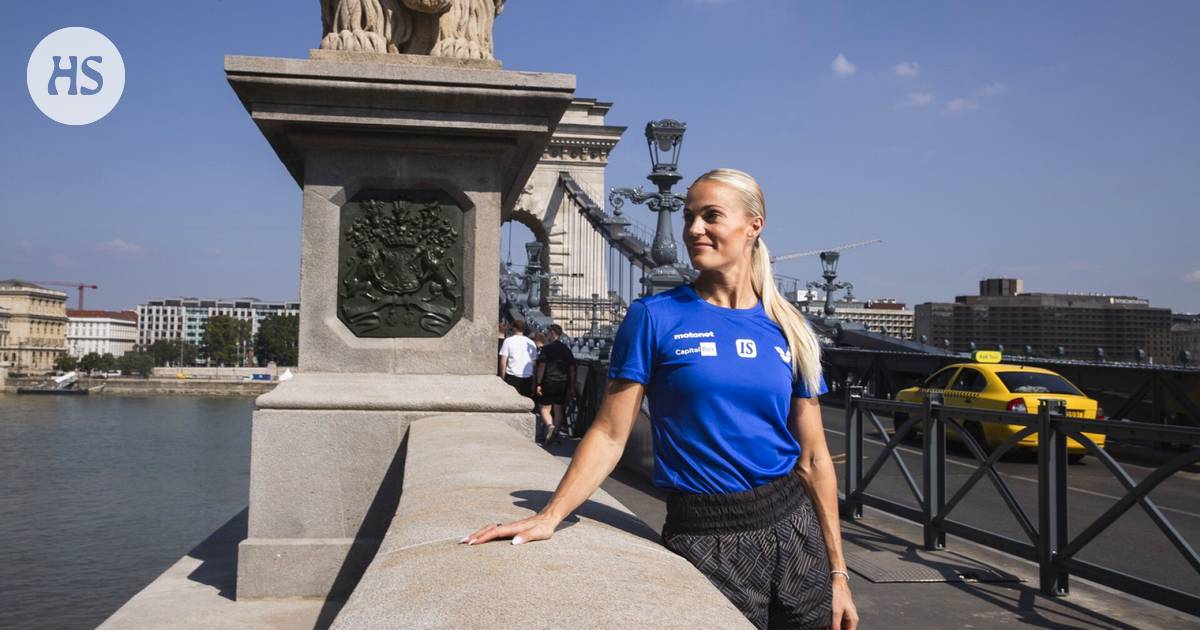Athletics|Harala builds his fairy-tale comeback with his own teachings.
Quick beeper Lotta Haralan the start of the season surprised the Finnish athletics people a week ago. Harala ran the 100-meter hurdles in Espoo with a Finnish record speed, but the result of 12.64 is not SE-worthy due to a slightly too strong tailwind.
Harala’s trick is tough in many ways. He has many injury-filled years behind him and has even missed entire seasons in terms of the Games. He only got the papers of his health from his persistent tibia injury in February. Nine out of ten would have quit in Harala’s situation, estimates the athletics expert Lauri Hollo.
In addition, Harala, 32, has given up personal trainers. He coaches himself these days. Harala is supported by her husband, a former professional ice hockey player Matias Myttynen.
Experts Hollo and Mika Järvinen say that the coaching solution is not completely exceptional, but at the top level, especially at the world level, it is rarely reached.
Järvinen says that an athlete of Harala’s age may have the ability to train himself, but he sees the situation as fundamentally problematic and a risk.
“You can’t break away from yourself, the decisions are damn subjective. At his best, an athlete knows how to listen to his own body and make the right decisions according to his mood. However, there are certain situations where an outside view and experience is more valuable than gold,” says Järvinen.
Statistical workshop according to Harala, he has had ten coaches as an adult. He said in February To Ylethat the idea of taking responsibility for one’s own jumps started to feel natural.
“I have combined the knowledge and science I received from the coaches and, of course, the knowledge of my own body,” he told Yle.
“I have taken courses online and read a lot. However, this is not rocket science.”
Hollo also emphasizes that making such a solution requires the athlete to have a lot of discussions with different coaches and athletes about the rhythm and planning of training.
“There are probably a lot of people who think they can take on that responsibility, but in reality they can’t. It seems that sometimes the athletes perhaps forget that the coach has, for example, coached longer than the athlete has lived”, says Hollo.
Lotta Harala gets to enjoy top sports after years of difficulties.
Hollo says that usually the coach is perceived as at least mental support. Often the relationship between athlete and coach develops in such a way that both spar with each other.
Järvinen also considers it risky if Harala does not have a mentor who knows how to question what has been decided. Such a situation can occur, for example, if the athlete starts to feel stuck or tense during training. The athlete may feel like stopping the exercise, but the coach may have a way to solve the situation in another way.
“I’m not saying that an athlete can’t make the right decision, but an athlete often lives in his own feelings so clearly that it’s difficult for him to make rational decisions,” Järvinen mentions.
“I see places of danger here.”
Free coach playing sports offers both a physical and a technical challenge. According to Hollo, quick fences are “the ultimate form of technology.” In that case, the evaluations of the outsider on the performance are valuable.
According to Hollo, the situation regarding the load is double-edged.
“There are many athletes who follow the program, even if their own feelings are bad, but they don’t dare to tell the coach about it. Then let’s get in shape. When you are in charge yourself, it is of course easy to react to the mood of the day.”
Järvinen characterizes that high-speed hurdles is a “brainless automation performance”, during which the athlete cannot analyze his run. Of course, the athlete can also review his performance from the video.
“But you have to get an outside perspective, because you become blind to your own decisions and technical issues,” says Järvinen.
Now the hot question for Harala is whether the fitness will last or whether the Espoo race was a single spike.
Hollo says that Harala can gain confidence from the opening race, but it is impossible to assess the fitness level. He points out that at the international top, hard results are achieved steadily from spring to autumn. Hollo speculates that the European Championships in the early summer might attract an athlete like Harala to get a fitness boost already.
“There he has a chance to go to the final. He is certainly also interested in the Olympics, but the blunt fact is that it is extremely difficult to succeed in high-speed fences in global value competitions.”
Järvinen hopes for a time starting at 12.5, but he reminds us to be realistic.
“If he can set an average of 12.8 in the lower parts, the summer has been successful. He currently has one perfect run and the next time is 12.89. That’s a big difference. It’s like night and day. There must be more runs in between. Then he has proven that 12.64 was not just a single perfect run,” states Järvinen.
